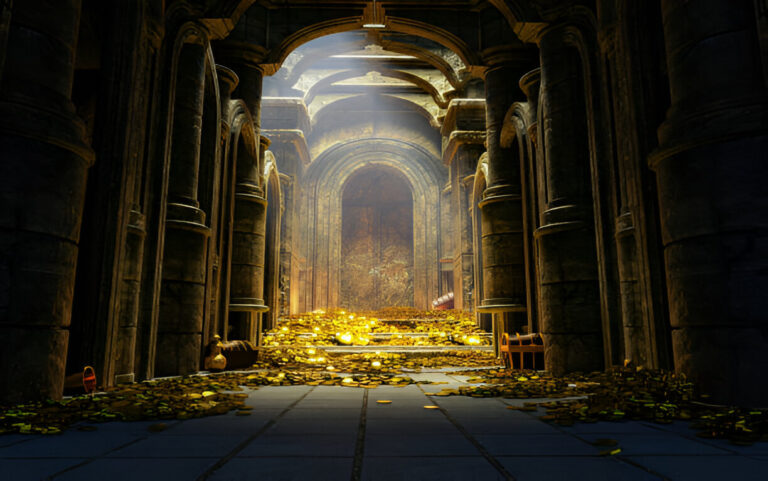Throughout history, gemstones have been revered not only for their beauty but also for their supposed magical and healing properties. In fantasy literature, gaming, and folklore, these gems take on an even more enchanting role. Whether imbued with elemental powers, granting divine wisdom, or acting as conduits of ancient magic, Fantasy Gems have captured the imaginations of many. This article delves into the allure of these mystical treasures, their origins, and their significance in fantasy worlds.
The Origins of Fantasy Gems
Fantasy gems are often inspired by real-world precious stones, but their power and lore extend far beyond reality. Many mythologies and ancient cultures ascribe magical properties to gemstones, which authors and creators have expanded upon in fantasy settings.
One of the earliest examples of mystical gems in folklore comes from Greek mythology, where the philosopher Plato described Atlantis as having a temple with walls adorned with orichalcum, a mythical metal with gemstone-like qualities. Similarly, ancient Chinese legends speak of the Dragon Pearl, a luminous jewel said to grant wisdom and longevity.
Over time, fantasy fiction evolved to feature magical gems as powerful artifacts. J.R.R. Tolkien’s “The Silmarillion” tells of the Silmarils, radiant jewels filled with the light of the Two Trees of Valinor, signifying purity and divine power. These jewels became the center of epic conflicts, demonstrating how fantasy gems often serve as both objects of desire and catalysts for adventure.
Types of Fantasy Gems and Their Powers
Fantasy gems come in many forms, each with unique magical attributes. Below are some common types found in various fantasy settings:
1. Elemental Gems
These gems harness the raw power of the elements:
- Fire Ruby: Generates intense heat, can ignite flames, and enhances fire magic.
- Ice Sapphire: Capable of freezing objects, controlling frost, and strengthening ice magic.
- Storm Opal: Stores electrical energy, allowing its wielder to unleash lightning or control storms.
- Earth Emerald: Provides stability, enhances nature magic, and grants control over terrain.
2. Healing and Protection Gems
These stones are often sought for their restorative properties:
- Moonstone of Renewal: Accelerates healing, cures ailments, and provides protective energy.
- Guardian Topaz: Forms a barrier against dark forces and negates harmful spells.
- Celestial Amethyst: Channels divine energy, purifying souls and banishing curses.
3. Wisdom and Knowledge Gems
Gems that enhance intellect, foresight, and memory:
- Sage’s Lapis Lazuli: Grants knowledge of ancient texts and languages.
- Oracle’s Diamond: Bestows glimpses into the future and enhances intuition.
- Mind’s Eye Obsidian: Protects against mind control and enhances telepathic abilities.
4. Forbidden and Dark Gems
While some gems bring light, others hold dark and corrupting energies:
- Shadow Onyx: Allows one to walk through darkness unnoticed but can erode morality.
- Bloodstone of the Fallen: Draws power from life force, granting immense strength at a terrible cost.
- Cursed Garnet: Binds the soul to another, causing eternal servitude or unbreakable pacts.
The Role of Fantasy Gems in Literature and Gaming
Fantasy gems often serve as the focal point of quests, conflicts, and character development in literature and games. In many role-playing games (RPGs), such as Dungeons & Dragons and The Elder Scrolls series, these gems provide players with unique abilities and powerful enchantments.
In literature, magical gems have been central to numerous stories. C.S. Lewis’s “The Lion, the Witch and the Wardrobe” features the White Witch using enchanted gems to wield her dark magic. In “Harry Potter,” the Sorcerer’s Stone is a legendary alchemical gem capable of granting immortality. These instances highlight how fantasy gems serve as more than just treasures; they symbolize power, knowledge, and transformation.
The Symbolism of Fantasy Gems
Beyond their magical attributes, fantasy gems often carry deeper meanings. They can represent purity, corruption, destiny, or even the eternal struggle between good and evil. The pursuit of a powerful gem may symbolize the quest for enlightenment, or alternatively, the dangers of unchecked ambition.
For example, the Silmarils in Tolkien’s works are not just beautiful objects—they represent divine craftsmanship and the tragic consequences of greed and pride. Similarly, the One Ring, though not a gemstone, embodies the same allure and corruption often associated with dark gems.
Crafting Your Own Fantasy Gems
For writers and game developers, creating original fantasy gems offers a chance to build immersive lore. Here are some tips for crafting unique mystical gems:
- Define Their Origin: Where did the gem come from? Was it created by gods, formed from a dying star, or forged in the heart of a magical volcano?
- Assign Unique Powers: Does the gem grant immense strength, reveal hidden truths, or allow travel between dimensions?
- Determine Its Limitations: Power should come with a cost. Does prolonged use drain the wielder’s life force? Does the gem attract dark entities?
- Tie It to the Story’s Themes: A gem’s purpose should align with the themes of the narrative, whether it be redemption, conquest, or destiny.
Conclusion
Fantasy gems continue to enchant audiences, serving as powerful artifacts in storytelling and gaming. Whether they are keys to ancient knowledge, tools of destruction, or symbols of divine power, these mystical treasures add depth and wonder to any fantasy world. As long as imagination thrives, the allure of fantasy gems will remain as dazzling and mysterious as the stories they inspire.

david Miller is an experienced English language expert with a deep passion for helping others communicate effectively and confidently. With a background in linguistics and literature, He provides clear, accessible insights on grammar, writing, and communication strategies. Through well-researched articles and practical advice, David Miller aims to make language learning both inspiring and achievable for readers of all levels.


